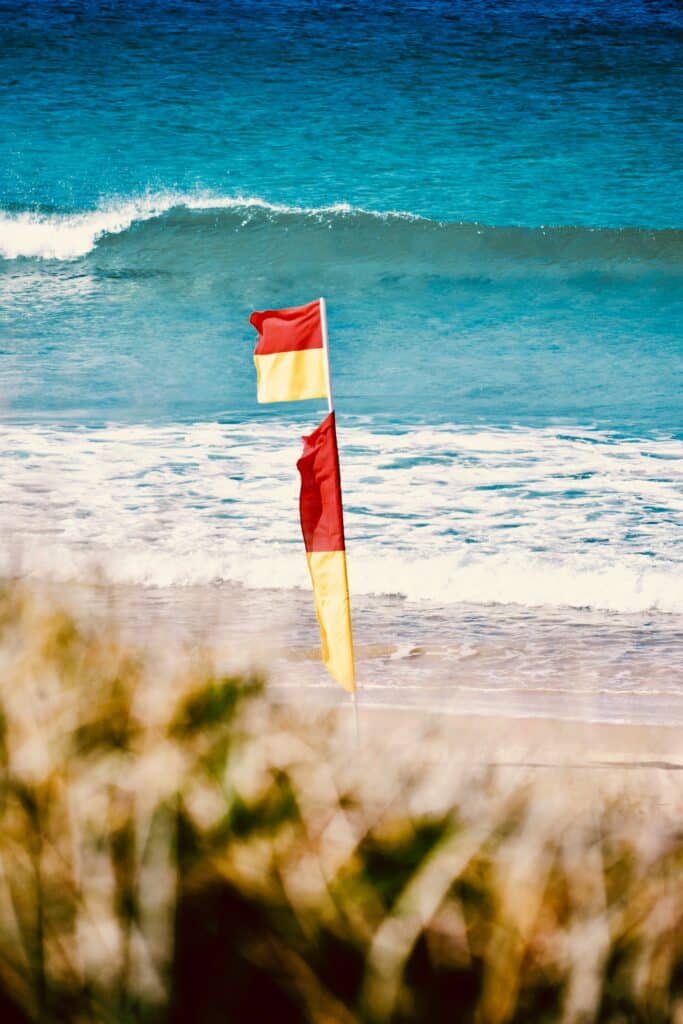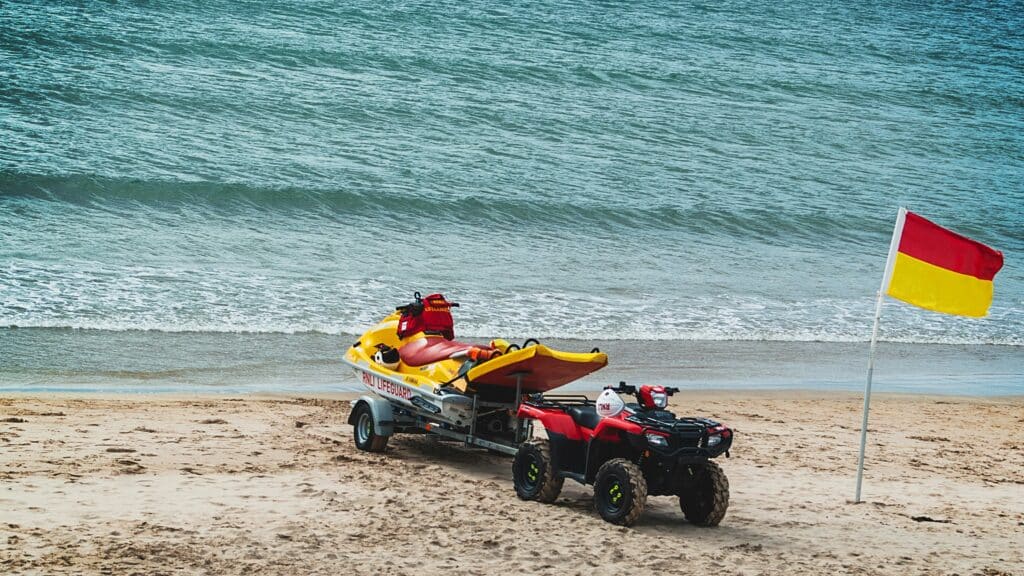If you’ve ever been to the beach, you’ve likely noticed beach flags flying near the shoreline. These flags come in various colors—yellow, red, purple, and sometimes even a combination of hues. These aren’t just decorations; they serve a critical purpose by ensuring your safety in the water. But do you really know what each flag signifies? Here’s a breakdown to help you understand what these beach flags mean for your safety during your next seaside adventure.
When you’re learning to surf or simply spending time at the beach, it’s essential to stay aware of your surroundings. This includes not just the waves and other surfers, but also the beach conditions signaled by these flags. Have you ever considered what these beach flags are telling you? How do you know when it’s safe to dive in for a swim or catch some waves? And when should you stay out of the water altogether?
Beach flags are there to keep you safe, and understanding their meanings can make the difference between a fun day at the beach and a potentially dangerous situation. Knowing why a particular flag, like a purple or yellow one, is raised could help you avoid risks and enjoy a safe surfing experience.
Common Beach Warning Flags and Their Meanings
Fortunately, there aren’t too many flags to memorise, and their meanings are generally straightforward. For instance, green typically indicates safe conditions, yellow suggests caution, and red warns of rough waters. But what about the purple, black-and-white, or orange flags? These beach flags follow guidelines set by the International Life Saving Federation (ILS), which standardises beach safety signals globally. However, be aware that flag appearances might differ slightly depending on the country or region.
A Guide to Beach Warning Flags
Let’s explore the different flags you might encounter and what each one signifies:
Green Flag: Low Hazard
Indicates calm surf, safe for swimming
When the green flag is up, the water is generally safe, with calm surf conditions. It’s a great time to use watersports equipment like bodyboards and surfboards. However, it’s important to note that the ILS does not universally endorse the green flag because there are always inherent risks in the water. Enjoy the calm waters, but stay vigilant as conditions can change.Yellow Flag: Medium Hazard
Caution advised; moderate surf and currents
A yellow flag signals that the surf is moderate and there might be currents. The waves could be higher than usual, making it a bit challenging. Strong swimmers should proceed with caution, while those less confident should consider staying out of the water. It’s wise to stay near a lifeguard when this flag is raised.Single Red Flag: High Hazard
Dangerous conditions; strong surf and currents
A single red flag indicates dangerous conditions, and swimming is generally discouraged. In some places, entering the water during a red flag warning could even result in a fine. Surfers who choose to go out should be prepared for large waves and powerful currents, but caution is paramount.Double Red Flags: Water Closed
Extremely hazardous conditions; water closed to the public
When you see two red flags, the water is too dangerous for any public use. The surf is at its most perilous, and you should absolutely stay out of the water. Even experienced surfers should reconsider entering under these conditions.Red and Yellow Flag: Lifeguarded Area
Recommended swimming zone under lifeguard supervision
This flag indicates a safe area for swimming, monitored by lifeguards. You’ll often see these flags marking the boundaries of a lifeguarded zone, encouraging swimmers to stay within this safe area.Black and White Quartered Flag: Surfing Area
Designated area for surfing and non-powered watercraft
This flag marks zones specifically for surfing or using non-powered watercraft. These areas are not intended for swimmers, so stay clear if you’re not surfing.Yellow Flag with Black Ball: No Surfing
Surfboards and non-powered watercraft not allowed
When this flag is flying, it means the area is off-limits for surfboards and similar equipment. Surfers should keep their boards on the beach.Purple Flag: Marine Life Hazard
Warning of dangerous marine life
The purple flag signals the presence of harmful marine life, like jellyfish or stingrays. While it’s not a shark warning, it does mean you should be cautious before entering the water, as these creatures can cause injury.Orange Windsock Flag: Offshore Winds
Inflatable devices should not be used
This flag warns of strong offshore winds, which can blow inflatables out to sea, making it difficult to return to shore. If you see this flag, it’s best to avoid using inflatables.Red and White Quartered Flag: Emergency Evacuation
Indicates an emergency situation requiring evacuation
This flag means you need to leave the water immediately due to an emergency, which could range from a shark sighting to contaminated water or a search operation. Don’t hesitate—get out of the water as quickly as possible.
Additional Beach Safety Signs
In addition to these flags, you might also come across warning signs at the beach. These are generally easy to understand, but it’s always a good idea to take a moment to read them carefully. For more details, you can check out resources like the City and County of Honolulu’s website, which offers a comprehensive list of beach warning signs.
Unsure About Conditions? Ask a Lifeguard
If you’re ever uncertain about what a flag means or the conditions at the beach, don’t hesitate to ask a lifeguard. They are there to help keep you safe. And remember, if you see someone struggling in the water, alert a lifeguard immediately. It’s always better to err on the side of caution.
By familiarising yourself with these flags and signs, you can ensure that your time at the beach is not only enjoyable but also safe.
Share this Article



Related Posts


Celebrate your Stag or Hen Party with Surfing Croyde Bay



